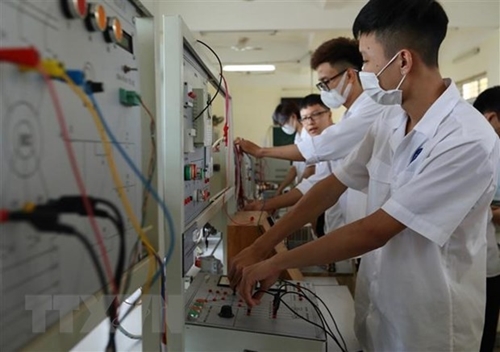After 35 years of the Doi moi (Renewal) process, Vietnam's labor market has witnessed a remarkable development in both scale and quality, deeply integrating into the international market.
    |
 |
|
Vietnam is striving to develop a modern and internationally integrated labour market. (Photo for illustration) |
Strong solutions to restructure the national economy, improve the business environment, attract investment and promote production and business in recent years have contributed to restructuring the labor force and increasing the number of laborers working in enterprises and production and business establishments.
Policies, programs and measures to generate jobs have been implemented synchronously and effectively, ensuring the labor supply for the market.
From approximately 28 million people in 1986, Vietnam’s labor force has increased to more than 51 million by mid-2022. The percentage of trained laborers in 2015 was 49%, and rose to 67% in the first six months of this year.
The work of sending laborers to work abroad under contract has also produced a good performance. There are more than 600,000 Vietnamese employees working in 40 countries and territories worldwide with stable income, sending home 3.5 billion USD worth of remittances per year.
The number of guest workers has increased gradually through years, with an average growth of 10% per year.
According to Minister of Labor, Invalids and Social Affairs Dao Ngoc Dung, the ministry has set out many tasks and solutions, focusing on strengthening communication work to affirm the transparency of the Vietnamese labor market, as well as its ability to supply human resources meeting requirements of enterprises.
Attention has also paid to evaluating the demand for human resources of foreign businesses investing in Vietnam, thus managing and developing the labor market towards flexibility, modernity and sustainability.
Minster Dung also underlined the need to perfect the system of policies and laws to synchronously develop elements of the labor market, improve the operational efficiency of the market's intermediary institutions.
Source: VNA